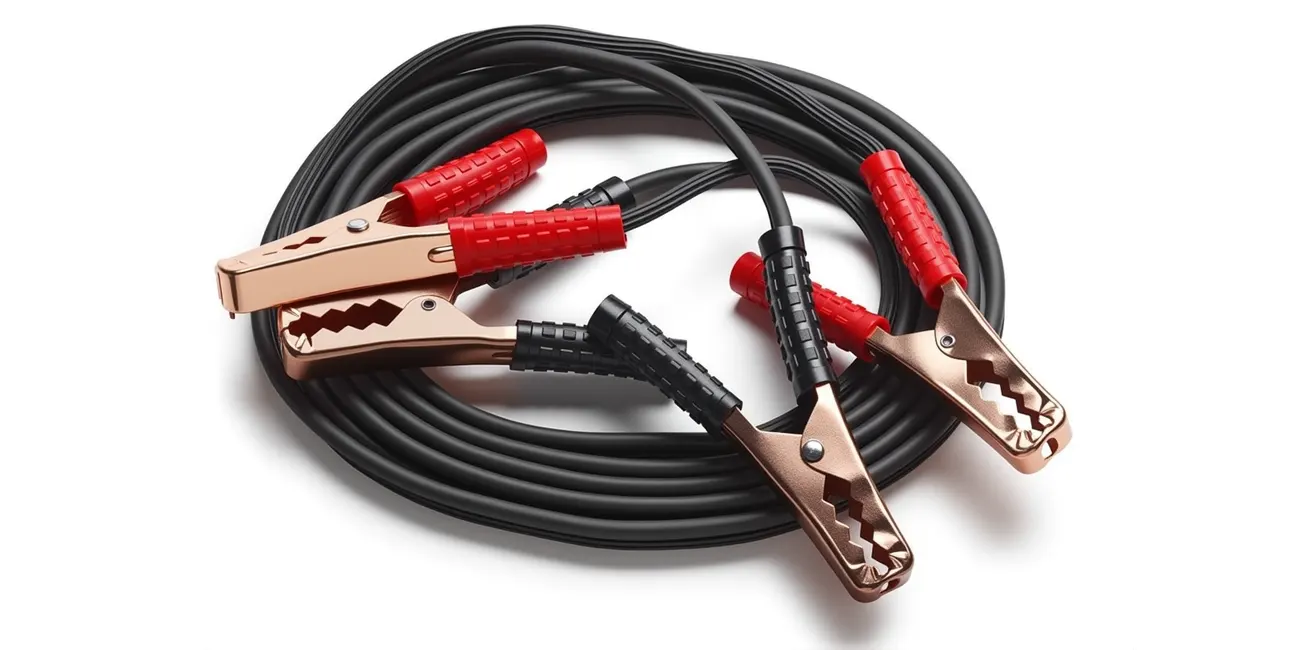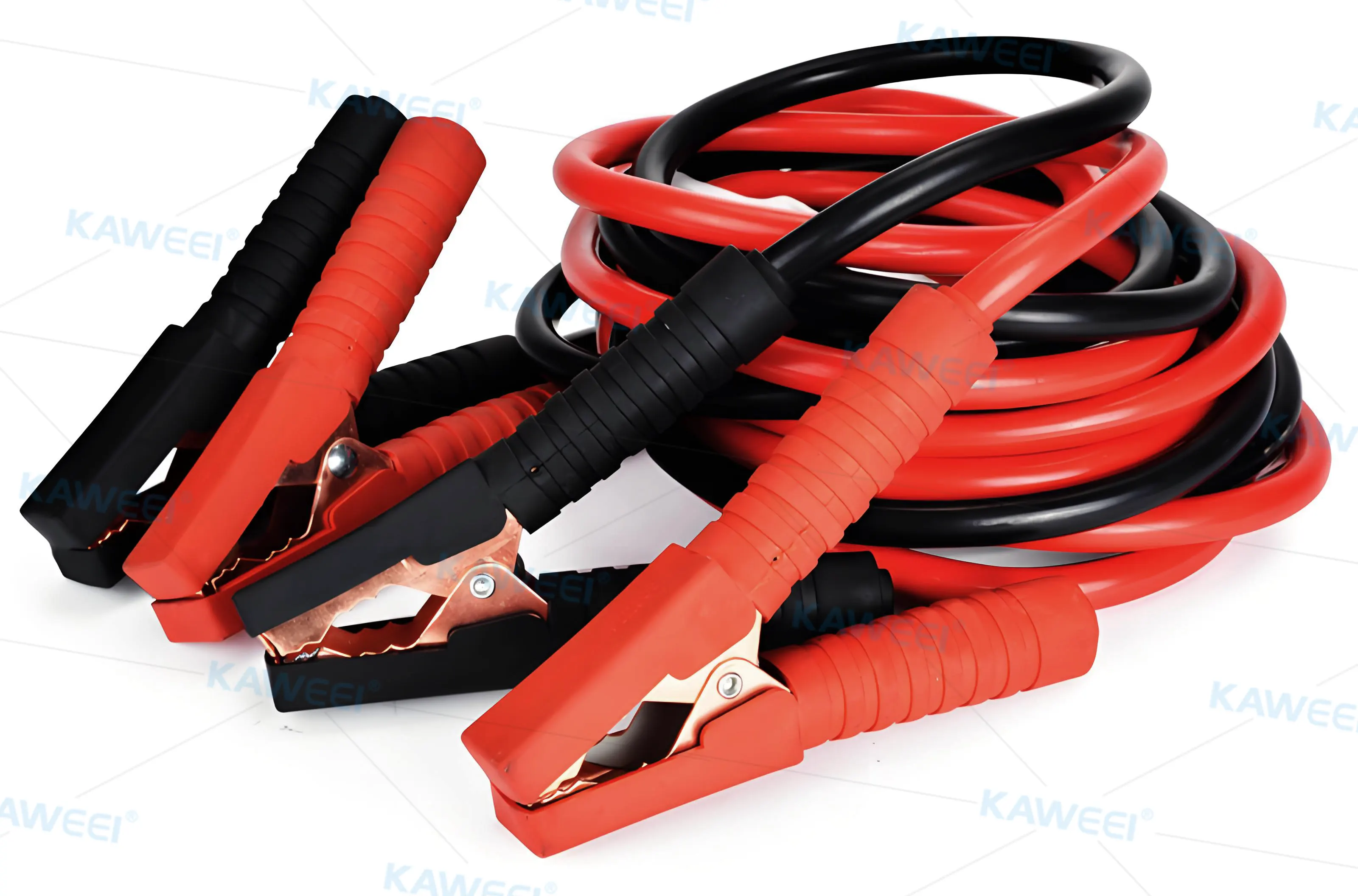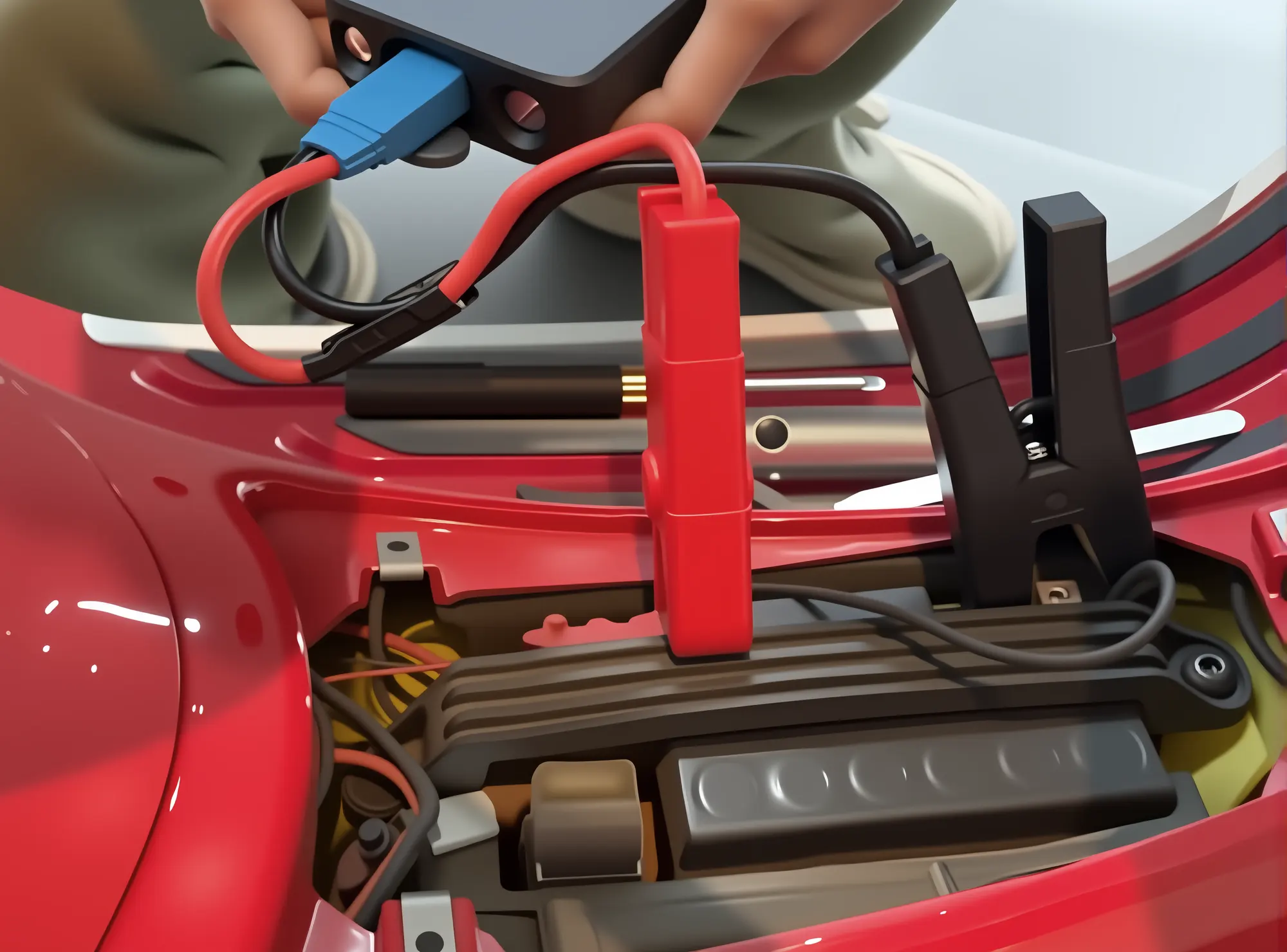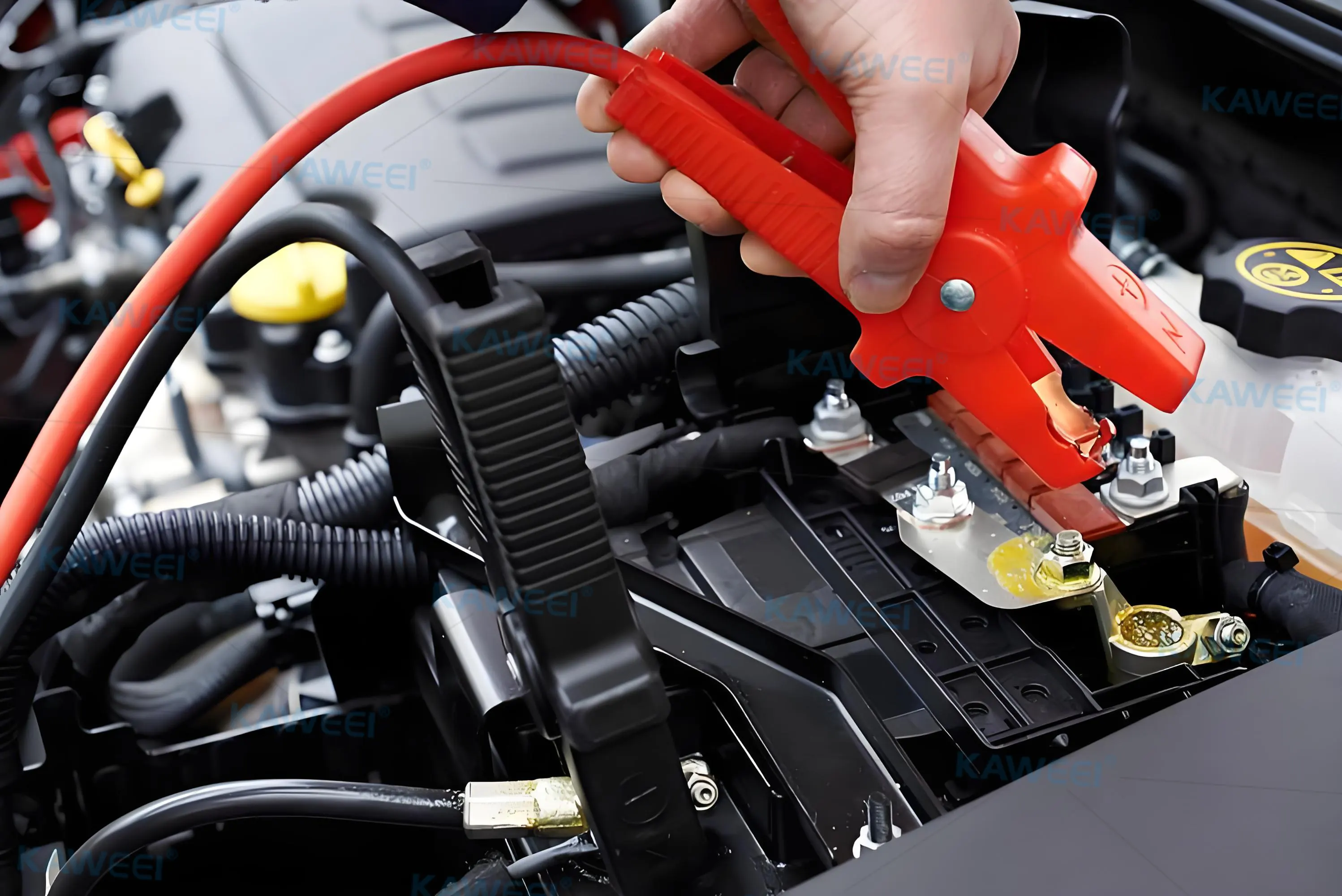
By quanyu lee
2025-08-15 03:28:23
Motorcycle Jumper Cable Guide
Motorcycle jump cables are an essential tool for riders in emergency situations. They allow you to jump-start your motorcycle using power from another motorcycle or car when the motorcycle battery is dead.
1. What are motorcycle jumper cables?
The primary function of motorcycle jumper cables is to connect two batteries, transferring power and helping to jump-start a dead motorcycle.
Motorcycle jumper cables have clamps on both ends, typically red for the positive (+) terminal and black for the negative (−) terminal.
Compared to car jumper cables, motorcycle jumper cables are typically shorter and thinner because motorcycles require less current.
2. Components of Motorcycle Jumper Cables
Copper Core Wire
Mostly uses stranded copper or copper-clad aluminum wire to ensure excellent conductivity. The thicker the wire diameter, the more efficient the current transmission.
Insulation
PVC or rubber material, resistant to heat, moisture, oil, and abrasion. High-quality insulation ensures safe use.
Clip
Spring-loaded clips securely hold the battery terminals. The red clip connects to the positive terminal, and the black clip connects to the negative terminal or vehicle ground.
Cable Length
Motorcycle jumper cables are typically 1.5–2 meters long, balancing ease of use and minimal resistance.

3. How to choose the right motorcycle jumper cables
Wire diameter: 8 AWG or thicker is recommended to ensure stable current transmission.
Length: 1.5–2 meters is ideal; longer leads to increased resistance, while shorter leads to inconvenience.
Clip quality: Strong grip, good conductivity, and a non-slip design are preferred.
Insulation: High-temperature and oil-resistant materials are preferred.
Portability: Lightweight and easily stowed, suitable for storage in a saddlebag or backpack.
4. Motorcycle jump starting steps
⚠ Safety Tip: Be sure to turn off both vehicles before jumpering and wear protective gloves.
1. Confirm Battery Voltage
Both batteries should have the same voltage, typically 12V.
2. Connecting the Positive Terminal
Attach the red clamp to the positive (+) terminal of the dead battery and the supply battery.
3. Connecting the Negative Terminal
Attach the black clamp to the negative (-) terminal of the supply battery. Clamp the other end to the metal frame of the dead motorcycle (grounded). Avoid clamping the negative terminal directly, which may cause sparks.
4. Starting the supply vehicle
Let it idle for 1–2 minutes.
5. Starting the dead vehicle
Try to start the motorcycle. If successful, let both vehicles idle simultaneously for 2–3 minutes.
6. Disconnection Order
Disconnect the negative terminal first, then the positive terminal, to avoid short circuits.

5. Motorcycle jumper cable usage and maintenance recommendations
Keep it with you: Essential for long-distance rides or winter use.
For emergency use only: Frequent jump starting can damage the battery; charge or replace it promptly.
Inspect regularly: Check the clamps for rust and cables for damage.
Keep dry: Wipe dry after use and store in a dry place to extend its life.
Observe safety regulations: Avoid sparks and keep away from moving engine parts.
6. The difference between motorcycle jumper cables and car jumper cables
| characteristic | motorcycle jumper wires | car jumper wires |
| Wire diameter | Thinner (typically 8 AWG or slightly thicker) | Thicker (typically 4–6 AWG) |
| length | Short (about 1.5–2 meters) | Length (approximately 3–5 meters) |
| weight | Lightweight and easy to carry in your car | Heavy and not easy to carry |
| Current capacity | Suitable for low current requirements of motorcycles | Suitable for high current requirements of automobiles |
| Portability | High enough to hold a bucket or backpack | Lower, usually placed in the trunk |
| Use security | More suitable for motorcycles, high safety | Useful, but not nimble enough to be safe on a motorcycle |
7. Frequently Asked Questions (FAQ) about Motorcycle Jumper Cables
Q1: Can all motorcycles be used with these cables?
A1: As long as the cable is suitable for a 12V system, almost all motorcycles can be used.
Q2: How long does it take to charge after jump starting?
A2: We recommend riding for at least 15–20 minutes to fully charge the battery.
Q3: What should I do if my motorcycle still won't start after using the jump cables?
A3: The battery may be dead or have another malfunction. We recommend charging it externally or replacing the battery.
Q4: Can car jump cables be used as jump cables?
A4: Some universal cables can be used, but motorcycle-specific cables are shorter, lighter, and safer to use.

Motorcycle jumper cables are a compact yet crucial emergency tool. Choosing the right cables, using them correctly, and maintaining them regularly can help prevent frustration during emergencies. Carrying a set of high-quality jumper cables is as important as wearing a helmet.



